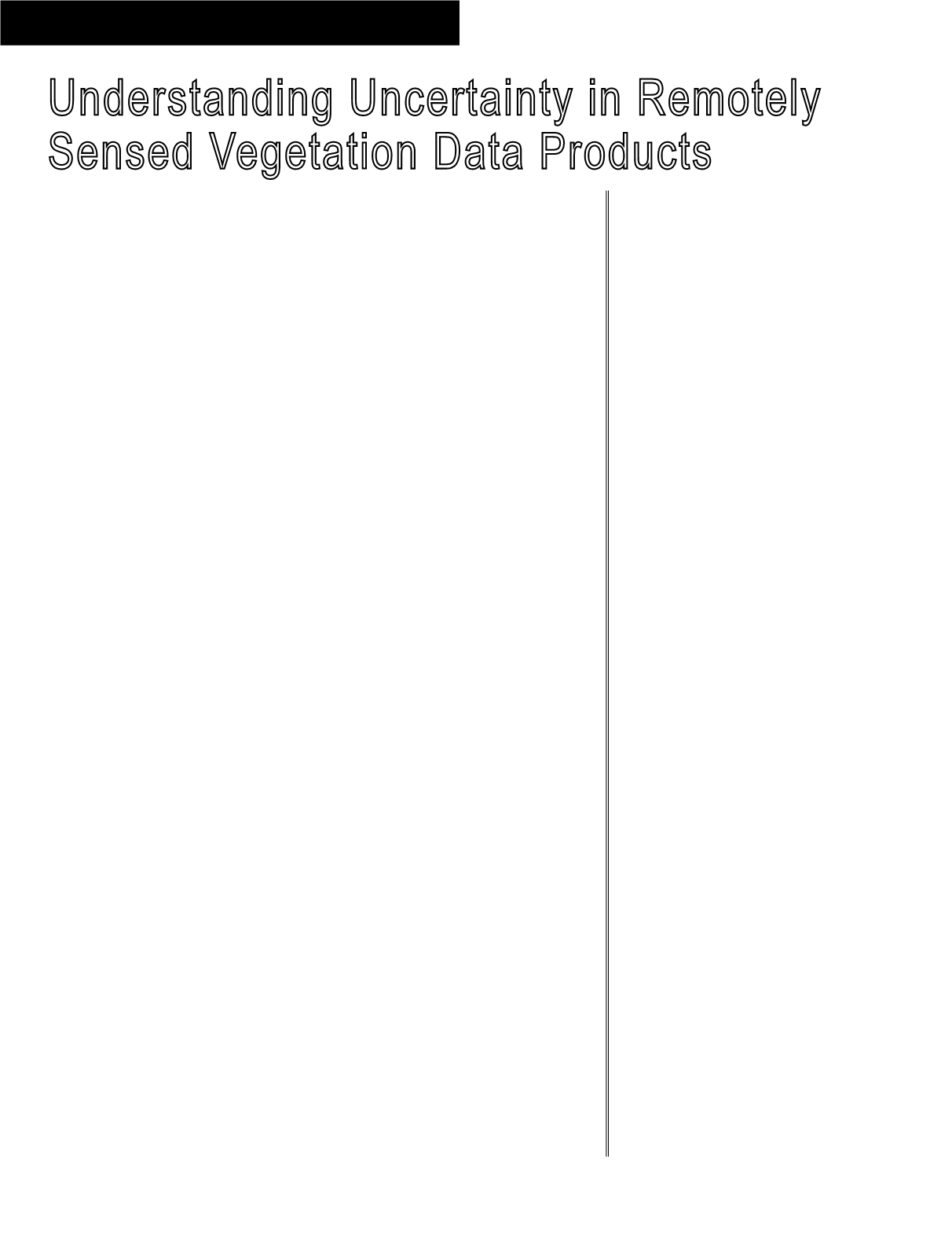
894
September 2014
PHOTOGRAMMETRIC ENGINEERING & REMOTE SENSING
Accurately quantifying spatial patterns of vegetation structure, health, and
composition is integral to our understanding of local and global ecological change
and to monitoring diverse ecosystems. In this context, remote sensing methods are
essential for measuring multiple biophysical properties over broad geographical
regions. However, despite the recognized need to use remote sensing methods, they
bring with them unique challenges. These include incorporation of a wide range of
both active and passive remote sensor types; non-uniform collection and processing
methods; and varying in situ validation methods. If not well-characterized, these
factors can reduce the accuracy associated with remote sensing derived estimates
of local on-the-ground measurements and processes across larger regions. Further,
they produce variability in data product and analysis outcomes that is not well-
understood. Understanding this variability is integral to missions such as ICESAT-
II, BIOMASS, Sentinel, HyspIRI, EnMAP, NEON, and Australia’s TERN and 3DEP,
that will be providing widely available remote sensing data products to support
scientific study and quantification of vegetation state and dynamics.
This special issue of
Photogrammetric Engineering & Remote Sensing
focuses on
quantifying uncertainty in remotely sensed estimates of vegetation biophysical
characteristics. Paper topics could include uncertainty associated with instrument
specification / configuration / calibration, data collection, processing and analysis,
or identifying best analysis methods which reduce this uncertainty in resulting
vegetation data products.
We especially encourage submissions that
•
focus on spectral or structural (active or passive sensor) modalities, but use
both in a fusion approach to reduce uncertainty;
•
address the scalability of remote sensing estimates; and
•
are aligned with planned science community biophysical products, such as
those found in the large scope ecological observatories.
All submissions will be peer-reviewed in line with
PE&RS
policy. Because of page
limits, not all submissions recommended for acceptance by the review panel may be
included in the special issue. Under this circumstance, the guest editors will select
the most relevant papers for inclusion in the special issue. Papers that are reviewed
favorably, but will not fit within the Special Issue, can be revised and submitted
for review as a new paper to the PE&RS Editor-in-Chief for possible publication
in a future regular issue of PE&RS. Authors must prepare manuscripts according
to the PE&RS Instructions to Authors, published in each issue of
PE&RS
and also
available on the ASPRS website at
.
I
mportant
D
ates
:
Manuscripts Due: 11/01/2014
Notification to Authors: 02/01/2015
Final Papers Due: 03/01/2015
Publication: 09/01/2015
P
lease
submit
your
manuscript
by
email
directly
to
the
G
uest
E
ditor
:
Leah Wasser
720-746-4917
Understanding Uncertainty in Remotely
Sensed Vegetation Data Products
G
uest
E
ditors
:
Dr. Leah Wasser
Remote Sensing Ecologist / Senior
Science Educator
National Ecological Observatory
Network, Boulder, CO
720-746-4917
Dr. Tanya Ramond
Systems Engineer - Airborne
Observation Platform
National Ecological Observatory
Network, Boulder, CO
720-746-4862
Dr. Jan van Aardt
Associate Professor
Rochester Institute of Technology -
Chester F. Carlson Center for Imaging
Science
Digital Imaging and Remote Sensing
Group
585-475-4229
Mr. Jason Stoker
Physical Scientist
USGS Earth Resources Observation
and Science (EROS)
605-594-2579
Dr. Tom Kampe
Director - Remote Sensing
National Ecological Observatory
Network, Boulder, CO 80305, USA
720-836-2414
D
eadline
for
S
ubmission
of
M
anuscripts
: 11/01/2014
T
entative
P
ublication
D
ate
:
09/01/2015
C
all
for
P
apers


